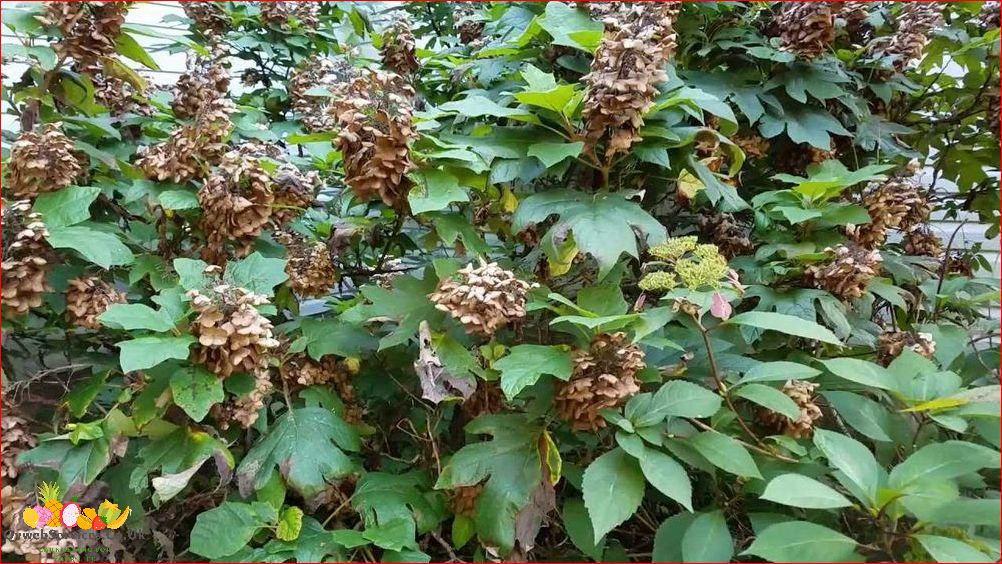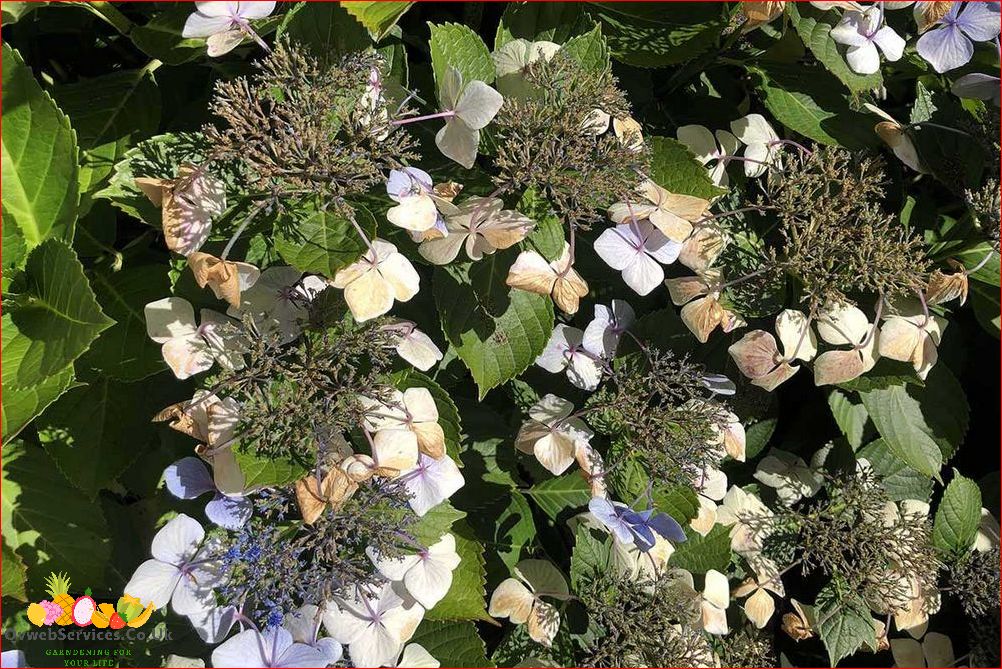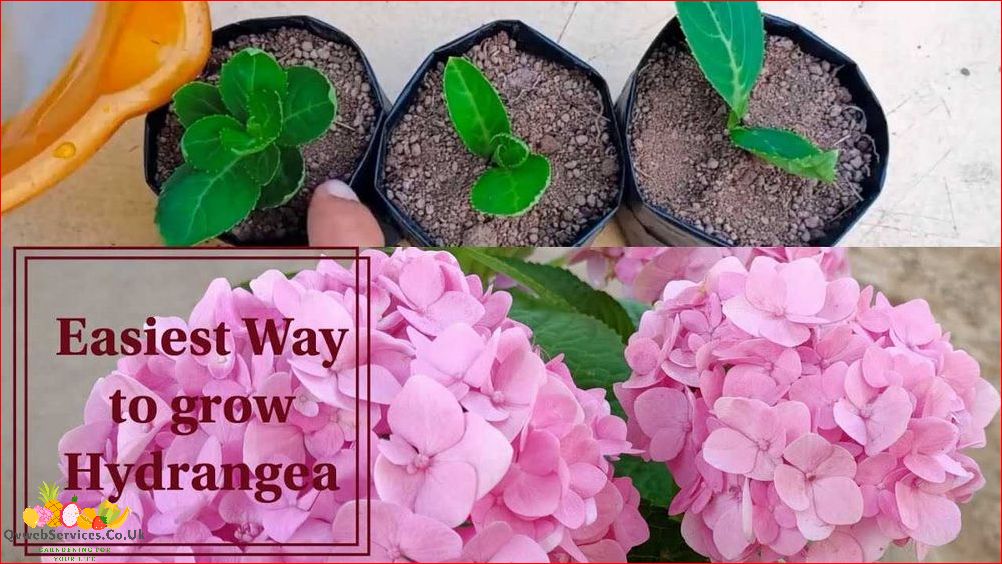Step-by-Step Guide on Growing Hydrangeas from Seed

Hydrangeas are beautiful flowering plants that can add a touch of elegance to any garden. While many people prefer to buy established hydrangea plants from a nursery, growing hydrangeas from seed can be a rewarding and cost-effective way to expand your garden. Plus, it allows you to experiment with different varieties and colors that may not be available as established plants.
But how do you grow hydrangeas from seed? It may seem daunting at first, but with a little patience and the right techniques, you can successfully grow hydrangeas from seed and enjoy their stunning blooms in your own backyard. In this article, we will guide you through the process step by step, from collecting and preparing the seeds to nurturing the seedlings and eventually transplanting them into your garden.
Before you begin, it’s important to note that growing hydrangeas from seed can be a time-consuming process. It can take several years for the plants to reach maturity and start producing flowers. However, if you’re willing to put in the effort, the results can be well worth it.
Choosing the Right Hydrangea Seeds
When it comes to growing hydrangeas from seed, selecting the right seeds is crucial for success. Here are some factors to consider when choosing hydrangea seeds:
1. Hydrangea Variety
There are several varieties of hydrangeas, each with its own unique characteristics. Decide on the specific variety you want to grow, such as mophead, lacecap, or panicle hydrangeas. Research the growth habits, flower colors, and overall appearance of different hydrangea varieties to find the one that suits your preferences.
2. Seed Source
It is important to obtain hydrangea seeds from a reputable source. Look for seed suppliers or nurseries that specialize in hydrangeas and have a good reputation for providing high-quality seeds. This ensures that you are getting true-to-type seeds that will grow into healthy and vibrant hydrangea plants.
3. Seed Viability
Check the viability of the hydrangea seeds before purchasing or planting them. Fresh seeds have a higher chance of germination compared to older seeds. Look for seeds that are plump, firm, and free from any signs of damage or mold. Avoid seeds that are discolored or shriveled, as they may not be viable.
4. Growing Conditions
Consider the growing conditions required by the specific hydrangea variety you have chosen. Some hydrangeas prefer full sun, while others thrive in partial shade. Make sure you can provide the necessary conditions, such as soil pH, moisture levels, and temperature range, for the successful growth of your chosen hydrangea variety.
By considering these factors and choosing the right hydrangea seeds, you can increase your chances of successfully growing beautiful and healthy hydrangea plants from seed.
Preparing the Soil
Before you start growing hydrangeas from seed, it is important to prepare the soil properly. Hydrangeas thrive in well-draining soil that is rich in organic matter. Follow these steps to ensure your soil is ready for planting:
1. Choose the Right Location
Hydrangeas prefer a location with partial shade, especially in hot climates. Select a spot in your garden that receives morning sun and afternoon shade. This will protect the plants from scorching heat and help them retain moisture.
2. Test the Soil pH
Hydrangeas prefer acidic soil with a pH level between 5.5 and 6.5. You can test the pH level of your soil using a soil testing kit available at garden centers. If your soil is too alkaline, you can lower the pH by adding sulfur or peat moss.
3. Improve Drainage
Hydrangeas do not like to sit in waterlogged soil, so it is important to ensure good drainage. If your soil is heavy and clayey, you can improve drainage by adding organic matter such as compost or well-rotted manure. This will help loosen the soil and improve its ability to drain excess water.
By preparing the soil properly, you will provide the ideal growing conditions for your hydrangea seeds. This will increase their chances of germination and ensure healthy plant growth.
Sowing the Hydrangea Seeds
Once you have collected the hydrangea seeds, it’s time to sow them. Follow these steps to ensure successful germination:
- Prepare a seed tray or small pots with well-draining soil. You can use a mixture of peat moss and perlite for better drainage.
- Moisten the soil before sowing the seeds. Make sure it is evenly moist but not waterlogged.
- Spread the hydrangea seeds evenly on the surface of the soil. Do not bury them as they require light to germinate.
- Gently press the seeds into the soil using your fingers or a small tool. Make sure they are in good contact with the soil.
- Cover the tray or pots with a clear plastic lid or plastic wrap to create a greenhouse-like environment. This will help retain moisture and heat.
- Place the tray or pots in a warm location with indirect sunlight. A temperature of around 70-75°F (21-24°C) is ideal for germination.
- Maintain the moisture level in the soil by misting it regularly. Avoid overwatering as it can lead to fungal diseases.
- Germination may take anywhere from 2 to 4 weeks. Once the seedlings have grown a few sets of true leaves, they can be transplanted into individual pots.
Remember to label your seedlings to keep track of the different hydrangea varieties. With proper care and patience, you will soon have beautiful hydrangea plants grown from seed!
Watering and Fertilizing
Watering and fertilizing are essential for the healthy growth of hydrangeas from seed. Here are some tips to help you properly care for your hydrangea plants:
Watering:
Hydrangeas need regular watering, especially during hot and dry periods. The soil should be kept consistently moist, but not waterlogged. Water deeply, allowing the water to penetrate the root zone. Avoid overhead watering, as it can lead to fungal diseases.
Fertilizing:
Hydrangeas benefit from regular fertilization to promote healthy growth and abundant blooms. Use a balanced, slow-release fertilizer with a ratio of 10-10-10 or 14-14-14. Apply the fertilizer according to the instructions on the package, usually in early spring and again in midsummer. Avoid over-fertilizing, as it can cause excessive leaf growth at the expense of flowers.
It’s important to monitor the moisture levels and nutrient needs of your hydrangeas throughout the growing season. Adjust your watering and fertilizing schedule as needed to ensure optimal growth and blooming.
Providing the Right Amount of Sunlight

Hydrangeas are beautiful flowering plants that require the right amount of sunlight to thrive. When growing hydrangeas from seed, it is important to provide them with the proper amount of sunlight to ensure healthy growth and vibrant blooms.
Hydrangeas generally prefer a balance of sunlight and shade. Too much direct sunlight can cause the leaves to wilt and the flowers to fade, while too much shade can result in weak stems and sparse blooms. It is important to find the right balance to promote optimal growth.
When choosing a location to grow your hydrangeas, look for an area that receives morning sun and afternoon shade. This will provide the plants with the necessary sunlight to photosynthesize and produce energy, while also protecting them from the intense heat of the afternoon sun.
It is also important to consider the specific variety of hydrangea you are growing, as different varieties have different sunlight requirements. Some varieties, such as the panicle hydrangea, can tolerate more sun and are better suited for full sun exposure. Others, like the bigleaf hydrangea, prefer more shade and are better suited for partial shade or filtered sunlight.
Monitoring Sunlight Levels
To ensure your hydrangeas are receiving the right amount of sunlight, it is important to monitor the sunlight levels in your chosen location. You can do this by observing the area throughout the day and noting the amount of direct sunlight it receives.
If you notice that your hydrangeas are receiving too much sunlight, you can provide them with some shade by using a shade cloth or placing them in a location that receives more shade during the hottest parts of the day. On the other hand, if your hydrangeas are not receiving enough sunlight, you can prune nearby trees or plants to allow more light to reach them.
Protecting from Extreme Sunlight
In areas with hot climates or intense sunlight, it is important to take extra precautions to protect your hydrangeas from extreme sunlight. This can be done by providing them with additional shade using umbrellas, shade cloth, or by planting them in containers that can be moved to a shadier location when needed.
Additionally, providing your hydrangeas with a layer of mulch around the base of the plant can help to regulate soil temperature and retain moisture, which can be beneficial in preventing damage from extreme sunlight.
By providing the right amount of sunlight for your hydrangeas, you can ensure their healthy growth and enjoy their beautiful blooms for years to come.
Protecting the Seedlings
Once your hydrangea seedlings have sprouted, it is important to take steps to protect them and ensure their healthy growth. Here are some tips to help you protect your hydrangea seedlings:
| 1. Provide shade: | Hydrangea seedlings are delicate and can easily get damaged by direct sunlight. Place a shade cloth or a thin fabric over the seedlings to protect them from harsh sunlight. |
| 2. Water carefully: | Seedlings require consistent moisture to thrive, but overwatering can lead to root rot. Water the seedlings gently and avoid waterlogged soil. Check the moisture level regularly and adjust watering accordingly. |
| 3. Protect from pests: | Keep an eye out for pests such as aphids, snails, and slugs that can damage the seedlings. Use organic pest control methods or insecticidal soap to keep them at bay. |
| 4. Provide support: | As the seedlings grow, they may need support to prevent them from bending or breaking. Use stakes or small plant cages to provide support and keep the seedlings upright. |
| 5. Protect from extreme temperatures: | Hydrangea seedlings are sensitive to extreme temperatures. If the weather gets too hot or too cold, consider moving the seedlings indoors or providing a temporary shelter to protect them. |
By taking these precautions, you can ensure that your hydrangea seedlings have the best chance of survival and healthy growth. With proper care, they will soon develop into beautiful and vibrant hydrangea plants.
Transplanting the Seedlings
Once your hydrangea seedlings have grown to a height of about 2-3 inches and have developed a strong root system, it is time to transplant them into individual pots or containers. Transplanting the seedlings will give them more space to grow and allow you to control their environment more effectively.
1. Prepare the pots or containers
Choose pots or containers that are at least 4 inches in diameter and have drainage holes at the bottom. Fill the pots with a well-draining potting mix, leaving about an inch of space at the top.
2. Carefully remove the seedlings
Gently loosen the soil around the seedlings with a small garden trowel or your fingers. Be careful not to damage the delicate roots. Lift the seedlings out of the soil, taking care to keep the roots intact.
3. Plant the seedlings

Make a small hole in the center of each pot and place the seedling in it. Fill the hole with soil, making sure the seedling is planted at the same depth it was in the original container. Press the soil gently around the seedling to secure it in place.
4. Water the seedlings
After planting the seedlings, water them thoroughly to settle the soil and ensure good root-to-soil contact. Keep the soil moist but not waterlogged, as excessive moisture can lead to root rot.
5. Provide the right conditions
Place the pots or containers in a location that receives bright, indirect sunlight. Maintain a temperature of around 70-75°F (21-24°C) and provide good air circulation. Avoid placing the seedlings in direct sunlight, as this can cause them to wilt or burn.
By following these steps, you can successfully transplant your hydrangea seedlings and give them the best chance of thriving. Remember to monitor their growth and adjust their care as needed. With proper care, your seedlings will eventually grow into beautiful, mature hydrangea plants.
Caring for Young Hydrangea Plants
Once your hydrangea plants have germinated and are growing, it’s important to provide them with proper care to ensure their healthy development. Here are some tips for caring for young hydrangea plants:
1. Watering
Hydrangeas need regular watering, especially during the first few years of growth. Keep the soil consistently moist but not waterlogged. Water deeply, allowing the water to penetrate the root zone. Avoid overhead watering to prevent leaf diseases.
2. Fertilizing
Young hydrangea plants benefit from regular fertilization to promote healthy growth. Use a balanced, slow-release fertilizer in early spring and again in late summer. Follow the instructions on the fertilizer package for proper application rates.
Additionally, you can supplement with organic matter, such as compost or well-rotted manure, to enrich the soil and provide essential nutrients.
3. Pruning
Pruning young hydrangea plants is not necessary in the first year, but it can be beneficial in subsequent years to shape the plant and encourage branching. Prune in late winter or early spring before new growth begins. Remove any dead or damaged branches and thin out crowded areas to improve air circulation.
It’s important to note that different hydrangea varieties have different pruning requirements, so be sure to research the specific needs of your hydrangea plant.
By providing proper watering, fertilizing, and pruning, you can help your young hydrangea plants thrive and develop into beautiful, healthy specimens.
Pruning and Shaping the Hydrangea Bush
Pruning and shaping your hydrangea bush is an important aspect of its care and maintenance. By properly pruning your hydrangeas, you can help promote healthy growth, control their size, and enhance their overall appearance. Here are some tips to help you prune and shape your hydrangea bush:
1. Timing: The best time to prune your hydrangeas is in late winter or early spring, before new growth begins. This allows the plant to recover from pruning and encourages new growth for the upcoming season.
2. Remove dead or damaged wood: Start by removing any dead or damaged wood from the hydrangea bush. This will help improve the overall health and appearance of the plant.
3. Thin out crowded branches: If your hydrangea bush has become overcrowded, you can thin out some of the branches to improve air circulation and reduce the risk of disease. Remove any weak or crossing branches to create a more open and balanced shape.
4. Shape the bush: Depending on the desired shape and size of your hydrangea bush, you can selectively prune the branches to achieve the desired look. For a more compact bush, prune back the branches by one-third to one-half of their length. If you prefer a more natural and free-flowing shape, you can selectively prune the branches to maintain a more organic form.
5. Deadhead spent flowers: To encourage continuous blooming, it is important to deadhead spent flowers. This involves removing the faded blooms by cutting the stem just above the first set of healthy leaves. Deadheading not only improves the appearance of the plant but also directs its energy towards producing new blooms.
Remember to always use clean and sharp pruning tools to make clean cuts and minimize the risk of disease. Additionally, it is important to research the specific pruning requirements for your hydrangea variety, as different types may have different pruning needs. By following these pruning and shaping tips, you can help your hydrangea bush thrive and enjoy beautiful blooms year after year.
Dealing with Pests and Diseases
While hydrangeas are generally hardy plants, they can still be susceptible to pests and diseases. Here are some common issues you may encounter and how to deal with them:
1. Aphids
Aphids are small, soft-bodied insects that can suck the sap from hydrangea leaves and stems. To get rid of aphids, you can spray your plants with a mixture of water and dish soap or use an insecticidal soap. Be sure to thoroughly coat the affected areas and repeat the treatment as necessary.
2. Powdery Mildew
Powdery mildew is a fungal disease that appears as a white, powdery coating on the leaves and stems of hydrangeas. To prevent powdery mildew, make sure your plants have good air circulation and avoid overhead watering. If powdery mildew does appear, you can treat it with a fungicide specifically designed for this disease.
It’s important to regularly inspect your hydrangeas for any signs of pests or diseases. Early detection and treatment can help prevent further damage and keep your plants healthy and thriving.
Preparing Hydrangeas for Winter
As the colder months approach, it is important to take steps to prepare your hydrangeas for winter. By following these guidelines, you can help ensure that your hydrangeas survive the harsh conditions and come back strong in the spring.
- Pruning: Before winter sets in, it is recommended to prune your hydrangeas. Remove any dead or damaged branches, as well as any weak growth. This will help promote healthy growth in the next season.
- Protective Mulch: Applying a layer of mulch around the base of your hydrangeas can provide insulation and protection from freezing temperatures. Use organic materials such as straw, leaves, or wood chips to create a thick layer.
- Watering: Hydrangeas need to be adequately watered before winter arrives. Make sure the soil is moist, but not waterlogged. This will help prevent dehydration during the colder months.
- Wrapping: In areas with severe winters, it may be necessary to wrap your hydrangeas in burlap or frost cloth. This will provide an extra layer of protection against freezing temperatures and harsh winds.
- Shelter: If possible, consider providing some form of shelter for your hydrangeas. This can be in the form of a temporary structure or even moving potted hydrangeas indoors. This will help shield them from extreme weather conditions.
By taking these precautions, you can help ensure that your hydrangeas survive the winter and continue to thrive in the years to come. Remember to remove any protective coverings or mulch in the spring when the danger of frost has passed. With proper care, your hydrangeas will reward you with beautiful blooms year after year.
Harvesting Hydrangea Seeds
Harvesting hydrangea seeds is an important step in the process of growing hydrangeas from seed. By collecting and saving the seeds, you can propagate new plants and expand your hydrangea collection.
When to Harvest
The best time to harvest hydrangea seeds is in the late summer or early fall when the flowers have started to fade and dry out. The seed heads should be papery and brown in color.
How to Harvest
To harvest hydrangea seeds, start by cutting the seed heads from the plant using a pair of clean, sharp scissors or pruning shears. Place the seed heads in a paper bag or envelope to allow them to continue drying.
Once the seed heads are completely dry, gently crush them to release the seeds. Be careful not to crush the seeds themselves, as this can damage them and reduce their viability.
Storing Hydrangea Seeds
After harvesting and crushing the seed heads, store the seeds in a cool, dry place. You can use small envelopes or seed packets to keep the seeds organized. Be sure to label the envelopes with the date and variety of the seeds.
It’s important to store the seeds in airtight containers to prevent moisture from getting in and causing them to mold or rot. A cool basement or refrigerator is an ideal location for storing hydrangea seeds.
Remember to check on your stored seeds periodically to ensure they are still dry and in good condition. If any seeds appear moldy or damaged, remove them from the storage container to prevent the spread of mold.
By following these steps, you can successfully harvest and store hydrangea seeds for future propagation. With a little patience and care, you can grow your own beautiful hydrangea plants from seed.
Storing Hydrangea Seeds
After harvesting hydrangea seeds, it is important to properly store them to ensure their viability for future planting. Here are some steps to follow when storing hydrangea seeds:
1. Cleaning the Seeds
Before storing the seeds, it is important to clean them to remove any debris or unwanted materials. Gently rub the seeds between your fingers to remove any excess pulp or dirt. Rinse the seeds with water and pat them dry with a clean towel.
2. Drying the Seeds
After cleaning, the seeds need to be dried thoroughly before storage. Spread the seeds out in a single layer on a clean, dry surface. Place them in a well-ventilated area away from direct sunlight. Allow the seeds to air dry for about a week or until they are completely dry and brittle.
3. Storing in airtight containers
Once the seeds are dry, transfer them to airtight containers such as glass jars or resealable plastic bags. Make sure the containers are clean and dry before adding the seeds. Label the containers with the date and type of hydrangea seeds to keep track of them.
It is important to store the seeds in a cool, dark place to maintain their viability. A refrigerator or a cool basement is ideal for storing hydrangea seeds. Avoid storing them in areas with high humidity or fluctuating temperatures.
4. Checking for Moisture
Periodically check the stored seeds for any signs of moisture. If you notice condensation or moisture inside the container, remove the seeds and allow them to air dry again before returning them to the container.
By following these steps, you can properly store hydrangea seeds and ensure their viability for future planting.
Video:Step-by-Step Guide on Growing Hydrangeas from Seed
As Stephanie C. Phillips, I am the voice and green thumb behind QvWebServices.co.uk. My passion for gardening and sharing my knowledge with others has led me to create a space where fellow gardening enthusiasts can find practical advice and inspiration.
From the sun-soaked fields of Texas to the cozy balconies of city dwellers, I strive to guide you through the nuances of growing your own food and beautifying your surroundings with plants. My articles are a reflection of my dedication to the art of gardening, and I hope they encourage you to get your hands dirty and enjoy the rewards of nurturing life from the soil.
Join me on this verdant journey to cultivate not just gardens, but a sense of community and connection to the earth.

